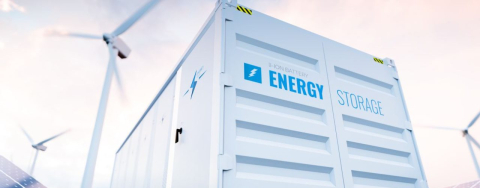A virtual power plant is an advanced system for managing distributed energy resources that integrates different generation units, energy storage facilities and flexible consumers into a single intelligent, digitally controlled entity. It can include, among other things:
- Renewable energy sources (RES) such as wind farms and photovoltaic installations,
- Energy storage facilities that enable the storage of surplus energy and its use during periods of increased demand,
- Cogeneration units, including combined heat and power plants and micro-cogeneration,
- Demand Side Response (DSR) consumers, i.e. entities that adjust their energy demand in response to price signals or system needs.
How does a virtual power plant work?
The operation of a VPP is based on advanced algorithms, artificial intelligence and IoT technology, which enable:
- Real-time monitoring of the operation of individual units,
- Optimisation of energy production, storage and consumption,
- Trading of energy on wholesale markets and Ancillary services,
- Dynamic response to changes in demand and grid conditions, which contributes to the stabilisation of the power system.
Benefits of virtual power plants
- Better integration of renewable energy sources – Virtual power plants minimise the problems associated with the variable generation of renewable energy sources, allowing for their more efficient use.
- Improved system stability – Thanks to precise control and quick reactions to changes in supply and demand, VPP supports the Transmission System Operator (TSO) in balancing the grid.
- Lower energy costs – industrial and commercial consumers can reduce their energy bills through flexible consumption management.
- Reduction of CO₂ emissions – optimal use of green energy and reduction of network losses support climate goals and decarbonisation of the energy sector.
- New sources of income – Owners of renewable energy systems and flexible consumers can earn extra money by providing Ancillary services such as frequency control or power reserve.
Virtual power plant vs. conventional power plant
Unlike traditional power plants, which operate in one physical location and have a specific capacity, a virtual power plant consists of many distributed units that together function as a single power plant. It does not require the construction of a large infrastructure, making it a cheaper, more flexible and scalable alternative to conventional power generation.
The future of virtual power plants
With the growing share of renewable energy sources and the development of digital technologies, virtual power plants will play an increasingly important role in the modernisation of electricity systems. Their development is crucial for the transition to a decentralised, intelligent and more sustainable energy system of the future.

